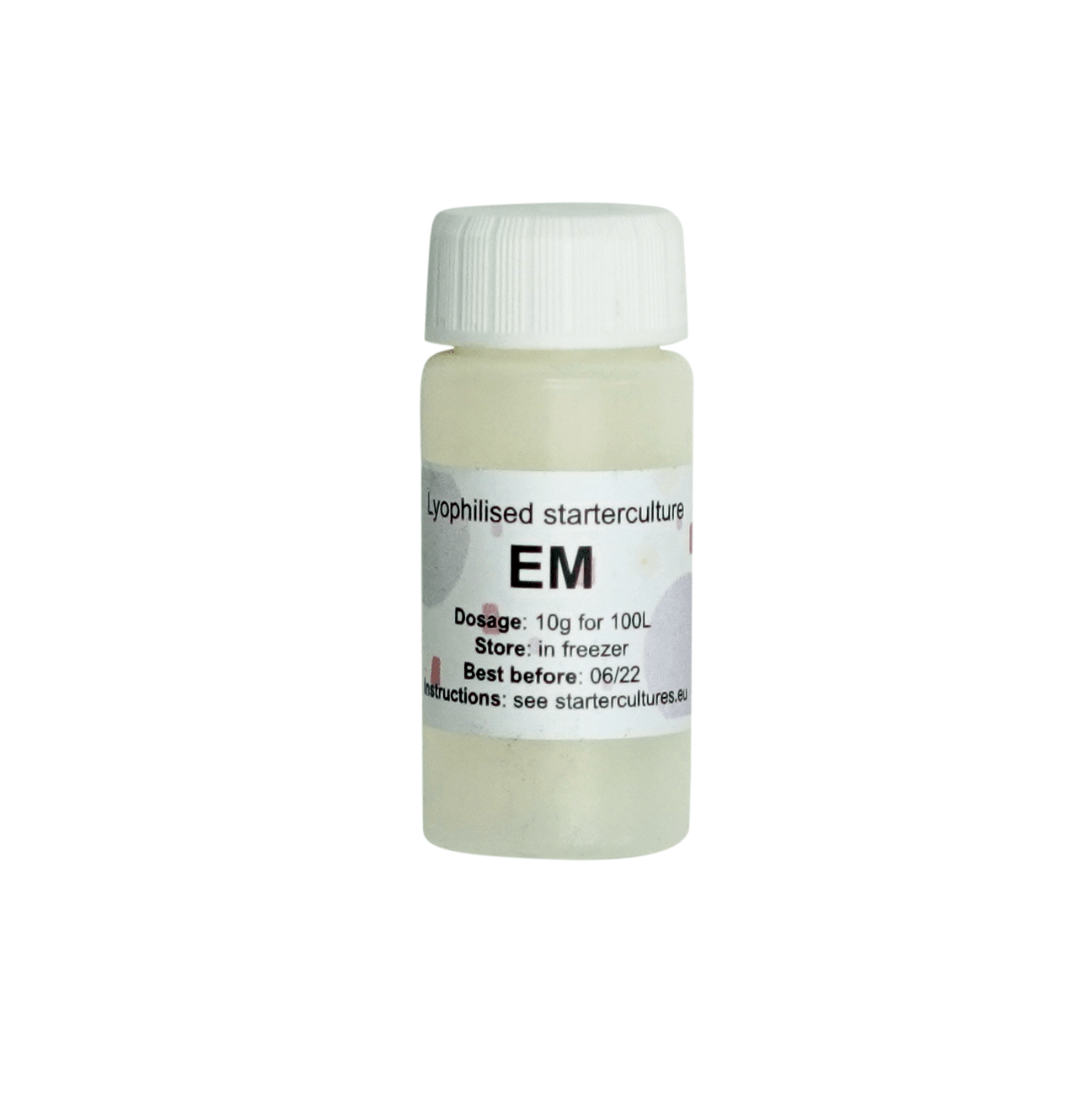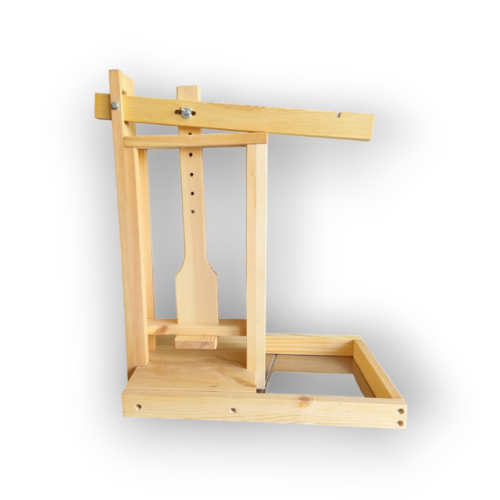Alpine cheese starter culture – EM | for Swiss-type cheeses
This Alpine cheese starter culture is suited for semi hard and hard cheeses. These Swiss-type cheeses are (semi)hard cheeses with a distinct character, like Emmental, Gruyère and Appenzeller, as well as the French Beaufort and Comté (from the Jura Mountains, near the Alps). Leerdammer or Maasdam cheese are Dutch versions of Alphine cheeses, and combined with our Propionibacterium shermanii you get the big holes in the cheeses.
In stock
Product Description
This Alpine cheese starter culture is particularly suited for Alpine cheeses. These Swiss-type cheeses are (semi)hard cheeses with a distinct character, whose origins lie in the Alps of Europe, although they are now eaten and imitated in most cheesemaking parts of the world.
Their distinct character arose from the requirements of cheese made in the summer on high Alpine grasslands, and then transported with the cows down to the valleys in the winter, in the historic culture of Alpine transhumance. Original Alpine cheeses are Emmental, Gruyère and Appenzeller, as well as the French Beaufort and Comté (from the Jura Mountains, near the Alps).
Leerdammer or Maasdam cheese are Dutch versions of Alphine cheeses, and combined with our Propionibacterium shermanii you get the big holes in the cheeses. Swiss cheeses such as Gruyere are quite popular, in fact they can be so good that Roman emperor Antonius Pius died from eating too much from it “cum Alpinum caseum in cena edisset avidius”.
What is a starter culture for cheese?
To get a good fermentation (acidification and flavor formation) you need a cheese starter culture. Cheese starter cultures are predominantly made of lactic acid bacteria, although other bacteria and yeasts may also be involved. In home cheese making, the primary role of starter cultures is the production of lactic acid from lactose at a predictable and controlled rate. It is the consequent decrease in pH that then affects a number of aspects of the cheese manufacturing process and ultimately cheese composition and quality.
A starter culture does not produce blue or white mold itself. Read more on cheese making at Wikipedia.
About this Alpine cheese starter culture
Concentrated, lyophilized lactic starter culture for Direct Vat Inoculation, ideal to make cow’s and goat’s milk cheeses, such as Emmental, Gruyere & Grevé.
Content
- 10 grams of starter cultures, enough for about 100L of milk
- The starter is completely natural without preservatives, additives, artificial colors or flavors. It contains no GMO ingredients and it is gluten-free.
- Produced in Poland
- Contents: starter cultures
- Allergens: milk
- Not suitable for vegan cheese, but please check out our large selection of vegan cheese molds and cultures.
Natural mesophilic- thermophilic culture composed in decreasing order by:
Lactococcus lactis subsp. lactis
Lactococcus lactis subsp. cremoris
Streptococcus salivarius subsp. thermophilus
Lactobacillus helveticus
Lactobacillus delbrueckii subsp. lactis
Characteristics
Optimum temperature for growth: 32 – 35 °C
Gas production: –
Proteolytic activity: ++++
Fermenting activity: +++
Combine this cheese starter culture with:
This culture can be used on it’s own, combined with our Propionibacterium shermanii you get the big holes in the cheese.
Looking for vegan cheese cultures?
This mold contains milk. If you want to make vegan cheese, check out our large selection of vegan cheese molds and cultures.
Storage instructions
In the fridge or freezer. Shelf life is approximately 1,5 years in the freezer or 12 months at +5ºC.
How do you use this culture?
This is a Direct Vat Inoculation (DVI) culture, meaning you can add the starter straight from the freezer to the milk.
Read More >
4 reviews for Alpine cheese starter culture – EM | for Swiss-type cheeses
| 5 star | 100% | |
| 4 star | 0% | |
| 3 star | 0% | |
| 2 star | 0% | |
| 1 star | 0% |
This Alpine cheese starter culture is suited for semi hard and hard cheeses. These Swiss-type cheeses are (semi)hard cheeses with a distinct character, like Emmental, Gruyère and Appenzeller, as well as the French Beaufort and Comté (from the Jura Mountains, near the Alps). Leerdammer or Maasdam cheese are Dutch versions of Alphine cheeses, and combined with our Propionibacterium shermanii you get the big holes in the cheeses.









Haven't used the products yet? I haven't used any products so far so I don't know yet
Aparte, niet Nederlandse kaassmaak en dat was precies wat ik wilde
Haven't used the products yet? I haven't used any products so far so I don't know yet
De eerste batch ingezet, resultaat verwacht ca 4-5 maanden